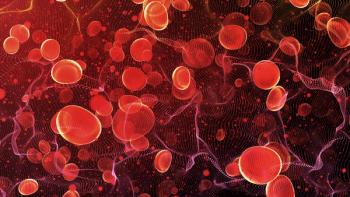
Improved Method of DNA Sequencing May Enhance Cancer Treatment
Comparing healthy and cancerous cells from the same individual could allow for a better understanding of translocations involved.
A recent study suggests that comparing a person’s own genome at different time periods could potentially lead to a more accurate assessment of potential cancers.
In a study conducted by scientists at the University of Colorado Cancer Center, more than 1000 genetic translocations were discovered in a model of lymphoma. Naturally, the scientists assumed there was a mistake made, so they sequenced various types of cells from wildtype mice.
Similar to the mouse model of cancer, the scientists discovered more than 1000 translocations. Still puzzled, they decided to do another experiment by gathering new genomic data from the Wellcome Trust Sanger Institute.
“When we mapped the genome of this particular mouse strain against the mouse reference genome published by the National Center for Biotechnology Information, we found thousands of translocations, even more than our experimental model,” said scientist Jing Hong Wang, MD, PhD.
They discovered that the discrepancy was not due to their experiment, the quality of their data, or the algorithm used. The problem was because reference genomes varied among difference mice, and not all mice have the same DNA sequences, according to the study published by BMC Genomics.
Because of these variations, DNA sequences may seem abnormal or out of place compared with those from another mouse.
Translocations occur when genes are snipped from 1 location to another, creating a fusion gene, which has been known to be involved in certain cancers. In ALK-positive lung cancer, the ALK gene fuses with EML4. It is currently unknown whether similar events are involved with lymphomas.
Since thousands of translocations were discovered in the mouse models, it was almost impossible to determine which were important in the case of cancer development, according to the study.
“Then we started to think about all these human cancer genomic studies,” Dr Wang said. “People use all this sequencing data to show genomic changes in human cancers, but what if these studies have similar comparison problems?”
These changes may not be very important when searching for a specific genetic change, but may provide insight to which translocations are involved with certain cancers. Randomness of repeats, gene polymorphisms, and other genetic variations may skew results when searching for the differences between healthy and cancerous cells, according to the study.
With
Scientists suggest that sequencing longer snips, 1000 or more base pairs, may prevent false matches. Another potential fix is to sequence DNA against a sample from the same source.
“We suggest considering not mapping your data to a reference genome, but to the genome of some cell from the same source that doesn’t have cancer,” said Dr Wang.
This process, de novo assembly, is compared to apples in the study. Apples compared to oranges are likely to have differences that could result from random variations, but apples compared to apples are likely to have differences due to cancer only, according to the study.
“People should be their own control. Instead of working with the published, generic reference genome, we should work with two samples (control vs. cancer) from the same person,” Dr Wang concluded. “Only then can you really figure out what’s going on in your cancer cell genome.”
Newsletter
Stay informed on drug updates, treatment guidelines, and pharmacy practice trends—subscribe to Pharmacy Times for weekly clinical insights.




















































































































































































































